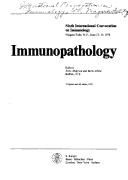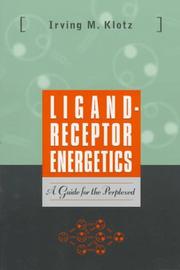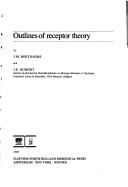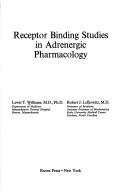| Listing 1 - 10 of 14 | << page >> |
Sort by
|
Dissertation
Year: 2022 Publisher: Liège Université de Liège (ULiège)
Abstract | Keywords | Export | Availability | Bookmark
 Loading...
Loading...Choose an application
- Reference Manager
- EndNote
- RefWorks (Direct export to RefWorks)
Lymphangiogenesis consists in the formation of new lymphatic vessels from already established ones. This complex biological process is triggered during inflammation, wound repair or cancer. A decrease or defect in lymphangiogenesis leads to a pathology called lymphedema. This condition is characterised by tissue swelling caused by the accumulation of interstitial fluids. Nowadays there is no curative therapy. Vascular Endothelial Growth Factor Receptors 2 and 3 (VEGFR 2/3) represent interesting therapeutic targets as they are known to be major lymphangiogenesis inducers. Previous work from the host laboratory has identified the endocytic receptor “urokinase plasminogen activator receptor-associated protein” (“uPARAP” encoded by MRC2 gene) as negatively regulating lymphangiogenesis. uPARAP interacts with VEGFR 2/3 and blocks their heterodimerisation and signalisation. More recently, the laboratory has identified the interaction of uPARAP with Vascular Endothelial cadherin (VE-cadherin), a transmembrane protein also known to play key roles in lymphangiogenesis. The aim of this work is to identify the binding site between uPARAP and VE-cadherin or VEGFR 2/3 in order to provide better knowledge on uPARAP’s functions in lymphatics. A collaboration with Pr. Miikka Vikkula (UCL) had previously identified 7 uPARAP variants from a primary lymphedema patient cohort. We generated and validated upon this work multiple engineered A431 cell lines to express some known uPARAP partners (VE- cadherin, VEGF-R2 and VEGF-R3). Through proximity ligation assays, we successfully identified two variants (Thr653Met, Arg680Trp) who decreased uPARAP interactions with VE- cadherin. Finally, we tried but failed to produce new lentiviral vectors containing the previously identified variants. Those vectors were though to permit the investigation of variant impacts in primary human lymphatic endothelial cells Le processus de génération de nouveaux vaisseaux sanguins à partir de vaisseaux préexistants est appelé ‘’lymphangiogenèse’’. Ce processus biologique complexe est déclenché pendant l’inflammation, lors des processus de réparation des tissus ou boen encore lors de cancers. Une diminution ou un défaut de lymphangiogenèse mène au développement d’une pathologie appelée ‘’lymphoedème’’. Cette pathologie est chartérisée par le gonflement des tissus causé par une accumulation de fluides au sein des tissus. Aucune thérapie n’existe actuellement pour soigner définitivement cette pathologie. Les récepteurs aux facteurs de croissance vasculaire endothélial (vascular endothelial growth factor receptors -VEGFRs-) de type 2 et 3 (VEGF-R2 et VEGF-R3) forment des cibles thérapeutiques intéressantes de par leurs rôles majeurs dans l’induction et la régulation de la lymphangiogenèse. De précédent travaux au sein du laboratoire d’accueil ont identifié le récepteur endocytique ‘’urokinase plasminogen activator receptor-associated protein’’ (uPARAP, produit de l’expression du gene MRC2) comme régulant négativement la lymphangiogenèse. uPARAP inhibe la formation d’hétérodimeres VEGF-R2/VEGF-R3 et bloque ainsi leur signalisation. Plus récemment, le laboratoire d’accueil a identifié l’interaction d’uPARAP avec la vascular endothelial cadherin (VE-cadherin), une protein transmembranaire également connue dans la lymphangiogenèse. Le but de ce travail est d’identifier le ou les site(s) de liaison d’uPARAP avec ses différents partenaires (VE-cadherin ou VEGF-R2/R3) afin d’obtenir une plus profonde connaissance des fonctions d’uPARAP dans le système lymphatique. En collaboration avec le Professeur Miikka Vikkula (UCL), 7 variants ont précédemment été identifiés. Au cours de ce travail, nous avons induit et validé l’expression de la VE-cadherin at des VEGF-R2 et R3 dans une lignée de cellules cancéreuses (A431). Nous avons ensuite identifié avec succès deux variants (Thr653Met, Arg680Trp) diminuant l’interaction d’uPARAP avec la VE-cadherin. Enfin, nous avons essayé mais échoué à produire de nouveau vecteurs lentiviraux contenant les différents variants. Ces vecteurs étaient destinés à l’évaluation de l’impact des variants au sein de cellules endothéliales lymphatiques humaines.
Lymphangiogenesis --- uPARAP --- VE-cadherin --- VEGF-R2 --- VEGF-R3 --- Binding site --- Sciences du vivant > Biochimie, biophysique & biologie moléculaire

ISBN: 0412143208 0412142708 0412142805 0412143402 0412152606 0412138107 041213800X 0470189401 0470264640 Year: 1976 Publisher: London : Chapman and Hall,
Abstract | Keywords | Export | Availability | Bookmark
 Loading...
Loading...Choose an application
- Reference Manager
- EndNote
- RefWorks (Direct export to RefWorks)
Binding sites, antibody. --- Receptors --- Drug. --- Receptors, Drug. --- Binding Sites, Antibody. --- Antibody Binding Sites --- Paratopes --- Antibody Binding Site --- Binding Site, Antibody --- Paratope --- Antigen-Antibody Reactions --- Immunoglobulin Variable Region --- Drug Receptor --- Drug Receptors --- Receptor, Drug --- Binding Sites. --- Binding Site --- Combining Site --- Combining Sites --- Site, Binding --- Site, Combining --- Sites, Binding --- Sites, Combining --- Protein Interaction Mapping --- Cell interaction. --- Interactions --- #Lilly --- Pharmaceutical Preparations --- Organisms --- Cells --- Interactions. --- Protein Binding --- Receptors, Drug --- Binding Sites, Antibody --- Binding Sites --- Cellular recognition. --- Cell receptors. --- Immunospecificity. --- Histology. Cytology --- Immunology. Immunopathology

ISBN: 3805513720 Year: 1973 Publisher: Basel Karger
Abstract | Keywords | Export | Availability | Bookmark
 Loading...
Loading...Choose an application
- Reference Manager
- EndNote
- RefWorks (Direct export to RefWorks)
Binding sites (Biochemistry) --- Immunospecificity --- Antigen-Antibody Reactions --- Binding Sites, Antibody --- Cell Biology. --- Immunoglobulins --- Cellular Biology --- Cytology --- Biologies, Cell --- Biologies, Cellular --- Biology, Cell --- Biology, Cellular --- Cell Biologies --- Cellular Biologies --- Antibody Binding Sites --- Paratopes --- Antibody Binding Site --- Binding Site, Antibody --- Paratope --- Immunoglobulin Variable Region --- Antigen Antibody Reactions --- Antigen-Antibody Reaction --- Reaction, Antigen-Antibody --- Reactions, Antigen-Antibody --- AC133 Antigen --- Antibodies --- Antigens --- Immunological specifics --- Serological specificity --- Specificity (Immunology) --- Antibody diversity --- Antigenic determinants --- Immune recognition --- Active site (Biochemistry) --- Bonding sites (Biochemistry) --- Reactive site (Biochemistry) --- Biochemistry --- Immunoglobulin idiotypes --- Immunoglobulin --- Globulins, Immune --- Immune Globulin --- Immune Globulins --- Globulin, Immune --- Genes, Immunoglobulin --- Congresses --- Immunology. Immunopathology --- Cell Biology

ISBN: 0471176265 9780471176268 Year: 1997 Publisher: New York (N.Y.) : Wiley,
Abstract | Keywords | Export | Availability | Bookmark
 Loading...
Loading...Choose an application
- Reference Manager
- EndNote
- RefWorks (Direct export to RefWorks)
Ligand binding (Biochemistry) --- Thermodynamics. --- Thermodynamics --- Ligand binding (Biochemistry) - Thermodynamics. --- Receptors, Cell Surface --- Ligands --- Binding Sites --- Thermodynamic --- Binding Site --- Combining Site --- Combining Sites --- Site, Binding --- Site, Combining --- Sites, Binding --- Sites, Combining --- Protein Binding --- Protein Interaction Mapping --- Ligand --- Cell Surface Hormone Receptors --- Endogenous Substances Receptors --- Cell Surface Receptor --- Cell Surface Receptors --- Hormone Receptors, Cell Surface --- Receptors, Endogenous Substances --- Receptor, Cell Surface --- Surface Receptor, Cell --- Hormones --- Receptor Cross-Talk --- Biothermodynamics --- Physical biochemistry
Periodical
Abstract | Keywords | Export | Availability | Bookmark
 Loading...
Loading...Choose an application
- Reference Manager
- EndNote
- RefWorks (Direct export to RefWorks)
Cell Membrane --- Binding Sites. --- Receptors, Cell Surface --- metabolism. --- Binding Site --- Combining Site --- Combining Sites --- Site, Binding --- Site, Combining --- Sites, Binding --- Sites, Combining --- Protein Binding --- Protein Interaction Mapping --- Cell interaction --- Cell metabolism --- Cell membranes --- Cell interaction. --- Cell membranes. --- Cell metabolism. --- Cells --- Metabolism --- Cellular control mechanisms --- Cell surfaces --- Cytoplasmic membranes --- Plasma membranes --- Plasmalemma --- Membranes (Biology) --- Glycocalyces --- Cell-cell interaction --- Cell communication --- Cellular communication (Biology) --- Cellular interaction --- Intercellular communication

ISBN: 0444801316 9780444801319 Year: 1980 Publisher: Amsterdam Elsevier
Abstract | Keywords | Export | Availability | Bookmark
 Loading...
Loading...Choose an application
- Reference Manager
- EndNote
- RefWorks (Direct export to RefWorks)
Histology. Cytology --- Molecular biology --- Binding sites --- Models, Theoretical --- Binding sites (Biochemistry) --- Ligands (Biochemistry) --- Cell receptors --- MODELS, THEORETICAL --- BINDING SITES --- Binding Sites. --- Models, Theoretical. --- Biochemistry --- Cell membrane receptors --- Cell surface receptors --- Receptors, Cell --- Cell membranes --- Proteins --- Active site (Biochemistry) --- Bonding sites (Biochemistry) --- Reactive site (Biochemistry) --- Immunoglobulin idiotypes --- Immunospecificity --- Binding Site --- Combining Site --- Combining Sites --- Site, Binding --- Site, Combining --- Sites, Binding --- Sites, Combining --- Protein Binding --- Protein Interaction Mapping --- Cell receptors. --- Binding sites (Biochemistry). --- Ligands (Biochemistry). --- Binding Sites --- Experimental Model --- Experimental Models --- Mathematical Model --- Model, Experimental --- Models (Theoretical) --- Models, Experimental --- Models, Theoretic --- Theoretical Study --- Mathematical Models --- Model (Theoretical) --- Model, Mathematical --- Model, Theoretical --- Models, Mathematical --- Studies, Theoretical --- Study, Theoretical --- Theoretical Model --- Theoretical Models --- Theoretical Studies --- Computer Simulation --- Systems Theory --- Biochemical phenomena

ISBN: 0890041644 9780890041642 Year: 1978 Publisher: New York (N.Y.): Raven Press,
Abstract | Keywords | Export | Availability | Bookmark
 Loading...
Loading...Choose an application
- Reference Manager
- EndNote
- RefWorks (Direct export to RefWorks)
Pharmacology. Therapy --- Adrenergic mechanisms --- Adrenergic receptors --- Radioligand assay --- Receptors, Adrenergic --- Binding sites --- Adrenaline --- Radioligand Assay --- BINDING SITES --- RECEPTORS, ADRENERGIC --- Receptors --- Binding Sites. --- Radioligand Assay. --- Receptors, Adrenergic. --- -Adrenergic mechanisms --- #Lilly --- Binding assay, Radioligand --- Competitive protein binding assay --- Ligand binding assay (Biochemistry) --- Protein binding assay --- Radioreceptor assay --- Receptor binding assay --- Tissue receptor assay --- Analytical biochemistry --- Ligand binding (Biochemistry) --- Protein binding --- Sympathetic nervous system --- Adrenalin --- Epinephrine --- Bronchodilator agents --- Catecholamines --- Neurotransmitters --- Sympathomimetic agents --- Adrenergic Receptor --- Epinephrine Receptors --- Norepinephrine Receptors --- Adrenergic Receptors --- Adrenoceptors --- Receptors, Epinephrine --- Receptors, Norepinephrine --- Receptor, Adrenergic --- Norepinephrine --- Sympathomimetics --- Racepinephrine --- Protein-Binding Radioassay --- Radioreceptor Assay --- Assay, Radioligand --- Assay, Radioreceptor --- Assays, Radioligand --- Assays, Radioreceptor --- Protein Binding Radioassay --- Protein-Binding Radioassays --- Radioassay, Protein-Binding --- Radioassays, Protein-Binding --- Radioligand Assays --- Radioreceptor Assays --- Ligands --- Protein Binding --- Binding Site --- Combining Site --- Combining Sites --- Site, Binding --- Site, Combining --- Sites, Binding --- Sites, Combining --- Protein Interaction Mapping --- Receptors. --- Binding Sites --- Adrenoreceptors --- Adrenoceptor --- Norepinephrine Receptor --- Receptor, Norepinephrine --- Adrenaline - Receptors
Book
ISBN: 0127225609 0323144535 1299453171 9780127225609 Year: 1977 Publisher: New York (N.Y.): Academic press
Abstract | Keywords | Export | Availability | Bookmark
 Loading...
Loading...Choose an application
- Reference Manager
- EndNote
- RefWorks (Direct export to RefWorks)
Molecular biology --- Nucleic acids --- Binding sites (Biochemistry) --- Biochemical genetics --- Proteins --- Molecular Biology --- Binding Sites --- Nucleic Acides --- Congresses --- Nucleic Acids. --- Proteins. --- Binding Sites. --- Molecular Biology. --- -Biochemical genetics --- -Nucleic acids --- -Proteins --- -Proteids --- Biomolecules --- Polypeptides --- Proteomics --- Polynucleotides --- Chemical genetics --- Biochemistry --- Molecular genetics --- Active site (Biochemistry) --- Bonding sites (Biochemistry) --- Reactive site (Biochemistry) --- Immunoglobulin idiotypes --- Immunospecificity --- Biochemical Genetics --- Biology, Molecular --- Genetics, Biochemical --- Genetics, Molecular --- Molecular Genetics --- Biochemical Genetic --- Genetic, Biochemical --- Genetic, Molecular --- Molecular Genetic --- Binding Site --- Combining Site --- Combining Sites --- Site, Binding --- Site, Combining --- Sites, Binding --- Sites, Combining --- Protein Binding --- Protein Interaction Mapping --- Gene Products, Protein --- Gene Proteins --- Protein Gene Products --- Proteins, Gene --- Molecular Mechanisms of Pharmacological Action --- Acids, Nucleic --- Congresses. --- Genetic Phenomena --- -Congresses --- Nucleic Acids --- Protein --- Nucleic Acid --- Acid, Nucleic --- Nucleic acids - Congresses --- Binding sites (Biochemistry) - Congresses --- Biochemical genetics - Congresses --- Proteins - Congresses --- Molecular Biology - congresses --- Binding Sites - congresses --- Proteins - congresses --- Nucleic Acides - congresses
Book
ISBN: 3039214047 3039214039 9783039214044 Year: 2019 Publisher: Basel, Switzerland : MDPI,
Abstract | Keywords | Export | Availability | Bookmark
 Loading...
Loading...Choose an application
- Reference Manager
- EndNote
- RefWorks (Direct export to RefWorks)
For at least six hundred million years, life has been a fascinating laboratory of crystallization, referred to as biomineralization. During this huge lapse of time, many organisms from diverse phyla have developed the capability to precipitate various types of minerals, exploring distinctive pathways for building sophisticated structural architectures for different purposes. The Darwinian exploration was performed by trial and error, but the success in terms of complexity and efficiency is evident. Understanding the strategies that those organisms employ for regulating the nucleation, growth, and assembly of nanocrystals to build these sophisticated devices is an intellectual challenge and a source of inspiration in fields as diverse as materials science, nanotechnology, and biomedicine. However, "Biological Crystallization" is a broader topic that includes biomineralization, but also the laboratory crystallization of biological compounds such as macromolecules, carbohydrates, or lipids, and the synthesis and fabrication of biomimetic materials by different routes. This Special Issue collects 15 contributions ranging from biological and biomimetic crystallization of calcium carbonate, calcium phosphate, and silica-carbonate self-assembled materials to the crystallization of biological macromolecules. Special attention has been paid to the fundamental phenomena of crystallization (nucleation and growth), and the applications of the crystals in biomedicine, environment, and materials science.
chitosan --- Csep1p --- bond selection during protein crystallization --- bioremediation --- education --- reductants --- heavy metals --- biomimetic crystallization --- MTT assay --- protein crystallization --- drug discovery --- optimization --- polymyxin resistance --- lysozyme --- ependymin-related protein (EPDR) --- equilibration between crystal bond and destructive energies --- barium carbonate --- dyes --- microseed matrix screening --- nanoapatites --- colistin resistance --- Haloalkane dehalogenase --- diffusion --- polyacrylic acid --- random microseeding --- protein ‘affinity’ to water --- insulin --- protein crystal nucleation --- agarose --- lithium ions --- ependymin (EPN) --- {00.1} calcite --- seeding --- Campylobacter consisus --- metallothioneins --- Crohn’s disease --- balance between crystal bond energy and destructive surface energies --- color change --- microbially induced calcite precipitation (MICP) --- crystallization of macromolecules --- crystallization --- calcein --- MCR-1 --- Cry protein crystals --- L-tryptophan --- circular dichroism --- crystal violet --- nanocomposites --- halide-binding site --- calcium carbonate --- PCDA --- ultrasonic irradiation --- adsorption --- biochemical aspects of the protein crystal nucleation --- GTL-16 cells --- proteinase k --- neutron protein crystallography --- classical and two-step crystal nucleation mechanisms --- thermodynamic and energetic approach --- heavy metal contamination --- N-acetyl-D-glucosamine --- crystallization in solution flow --- solubility --- biomorphs --- droplet array --- biomimetic materials --- ferritin --- biomineralization --- wastewater treatment --- H3O+ --- silica --- graphene --- supersaturation dependence of the crystal nucleus size --- pyrrole --- micro-crystals --- nucleation --- crystallography --- mammalian ependymin-related protein (MERP) --- high-throughput --- vaterite transformation --- gradients --- materials science --- bioprecipitation --- biomedicine --- human carbonic anhydrase IX --- protein crystal nucleation in pores --- growth --- crystal growth
Book
Year: 2021 Publisher: Basel, Switzerland MDPI - Multidisciplinary Digital Publishing Institute
Abstract | Keywords | Export | Availability | Bookmark
 Loading...
Loading...Choose an application
- Reference Manager
- EndNote
- RefWorks (Direct export to RefWorks)
This book is a collection of original research articles in the field of computer-aided drug design. It reports the use of current and validated computational approaches applied to drug discovery as well as the development of new computational tools to identify new and more potent drugs.
Research & information: general --- Chemistry --- 3D-QSAR --- pharmacophore modeling --- ligand-based model --- HDACs --- isoform-selective histone deacetylase inhibitors --- aminophenylbenzamide --- hERG toxicity --- drug discovery --- fingerprints --- machine learning --- deep learning --- gene expression signature --- drug repositioning approaches --- RNA expression regulation --- high-throughput virtual screening --- dual-target lead discovery --- neurodegenerative disorders --- Alzheimer’s disease --- dual mode of action --- multi-modal --- nicotinic acetylcholine receptor --- acetylcholinesterase --- molecular docking --- methotrexate --- drug resistance --- human dihydrofolate reductase --- virtual screening --- molecular dynamics simulation. --- epitope binning --- epitope mapping --- epitope prediction --- antibody:antigen interactions --- protein docking --- glycoprotein D (gD) --- herpes simplex virus fusion proteins --- Src inhibitors --- pharmacophore model --- molecular dynamics simulations --- in silico --- COX-2 inhibitors --- molecular modeling --- sodium–glucose co-transporters 2 --- FimH --- uropathogenic bacteria --- urinary tract infections --- diabetes --- drug-resistance mutations --- HIV-2 protease --- structural characterization --- induced structural deformations --- SARS-CoV-2 --- COVID-19 --- multiprotein inhibiting natural compounds --- MD simulation --- 3CL-Pro --- antivirals --- docking simulations --- drug repurposing --- consensus models --- binding space --- isomeric space --- MRP4 --- SNPs --- variants --- protein threading modeling --- molecular dynamics --- binding site --- hTSPO --- PK11195 --- cholesterol --- homology modeling --- molecular dynamics (MD) simulation --- carbon nanotubes --- Stone–Wales defects --- haeckelite defects --- doxorubicin encapsulation --- drug delivery system --- binding free energies --- noncovalent interactions --- main protease --- mutants --- inhibitors --- PF-00835231 --- Mycobacterium tuberculosis --- tuberculosis --- proteasome --- natural compounds --- multiscale --- multitargeting --- polypharmacology --- computational biology --- drug repositioning --- structural bioinformatics --- proteomic signature --- skin aging --- oxidative stress --- aging progression mechanism --- genome-wide genetic and epigenetic network (GWGEN) --- systems medicine design --- multiple-molecule drug --- immunoproteasome --- non-covalent inhibitors --- MD binding --- metadynamics --- induced-fit docking --- n/a --- Alzheimer's disease --- sodium-glucose co-transporters 2 --- Stone-Wales defects
| Listing 1 - 10 of 14 | << page >> |
Sort by
|

 Search
Search Feedback
Feedback About UniCat
About UniCat  Help
Help News
News